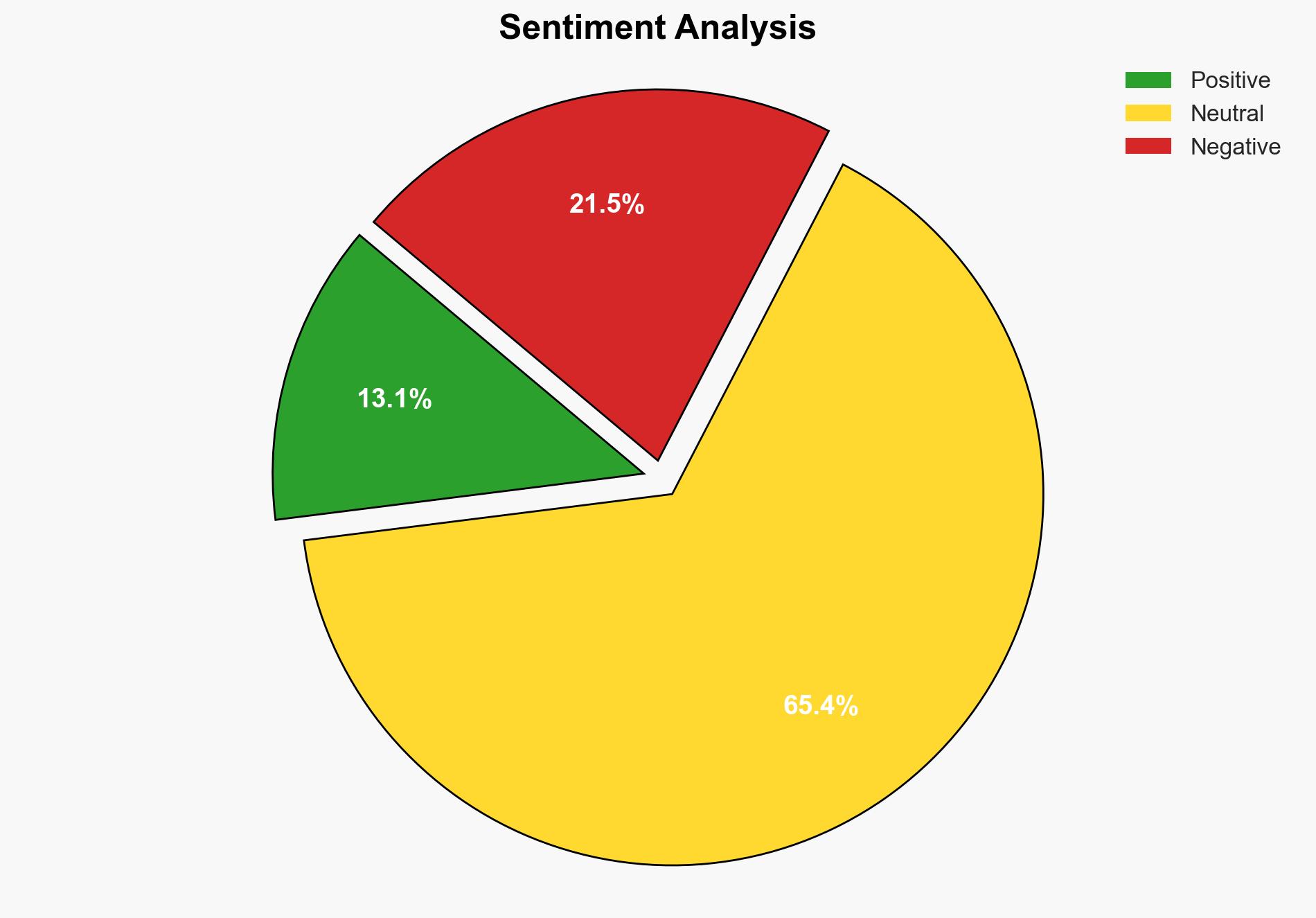US intelligence Hamas continues to pose security threat situation to remain volatile – The Jerusalem Post
Published on: 2025-03-26
Intelligence Report: US intelligence Hamas continues to pose security threat situation to remain volatile – The Jerusalem Post
1. BLUF (Bottom Line Up Front)
The situation in Gaza and Israel remains volatile with ongoing threats from Hamas and other regional actors. Despite a ceasefire, Hamas retains significant military capabilities and political influence in Gaza. The broader Israeli-Palestinian conflict is exacerbated by instability in the West Bank and potential leadership transitions. Iran’s support for proxy groups continues to pose a significant threat to regional stability. Immediate attention is required to address these challenges and mitigate potential escalations.
2. Detailed Analysis
The following structured analytic techniques have been applied for this analysis:
General Analysis
The annual threat assessment highlights the persistent threat posed by Hamas, which, despite being degraded, retains a substantial number of fighters and an underground infrastructure. The likelihood of resumed guerrilla activities remains high. The report also underscores the declining support for Hamas among Gazan civilians, contrasted with sustained support in the West Bank. The instability in the West Bank is further complicated by the weakening Palestinian Authority, which could lead to increased violence and governance challenges.
Iran’s influence in the region is significant, with its proxies, including Hezbollah and Iraqi Shia militias, posing direct threats to Israel and regional stability. Tehran’s missile capabilities and nuclear ambitions remain critical concerns. The report suggests that Iran’s strategic objectives include leveraging its military capabilities to bolster regional influence and ensure regime survival.
3. Implications and Strategic Risks
The ongoing volatility in Gaza and the West Bank poses significant risks to regional stability and security. The potential for renewed conflict could impact economic interests and diplomatic relations. Iran’s activities, particularly its support for proxy groups, could lead to broader regional conflicts, affecting global energy markets and international shipping routes. The decline in the Palestinian Authority’s effectiveness could result in increased violence and instability, further complicating peace efforts.
4. Recommendations and Outlook
Recommendations:
- Enhance intelligence-sharing and coordination among regional allies to monitor and counteract threats from Hamas and Iranian proxies.
- Support diplomatic efforts to stabilize the West Bank and strengthen the Palestinian Authority to prevent further deterioration.
- Implement technological advancements in missile defense systems to mitigate threats from Iran’s missile capabilities.
Outlook:
Best-case scenario: A sustained ceasefire in Gaza and successful diplomatic interventions lead to reduced tensions and gradual stabilization in the West Bank.
Worst-case scenario: Renewed hostilities in Gaza, exacerbated by Iranian proxy activities, result in a broader regional conflict.
Most likely outcome: Continued low-level conflicts in Gaza and the West Bank, with periodic escalations influenced by external actors like Iran.
5. Key Individuals and Entities
The report mentions significant individuals and organizations such as Hamas, Hezbollah, Iran, and Ali Khamenei. These entities play crucial roles in the ongoing regional dynamics and are central to understanding the current security threats.





